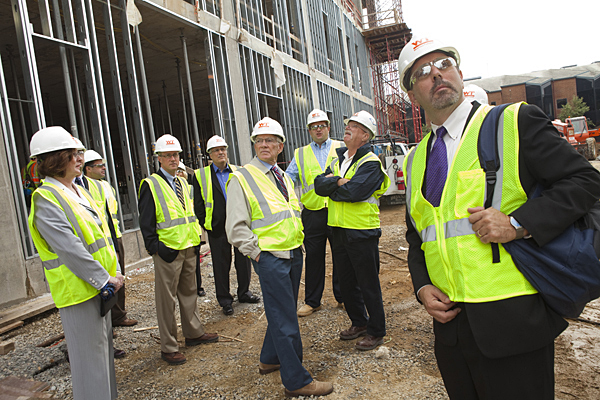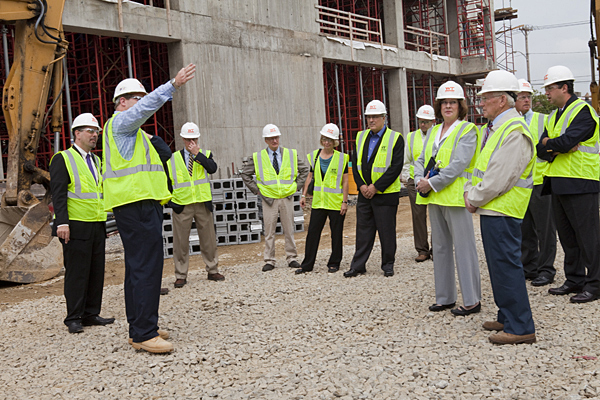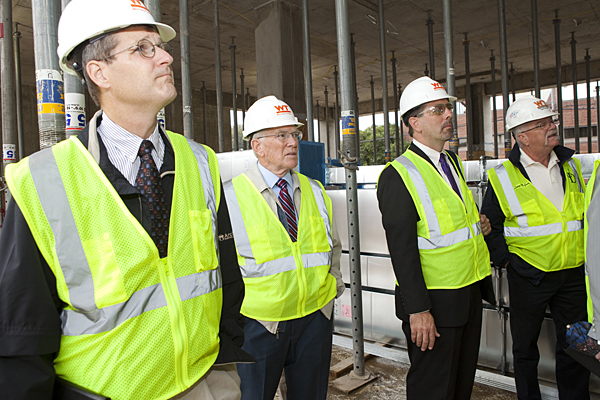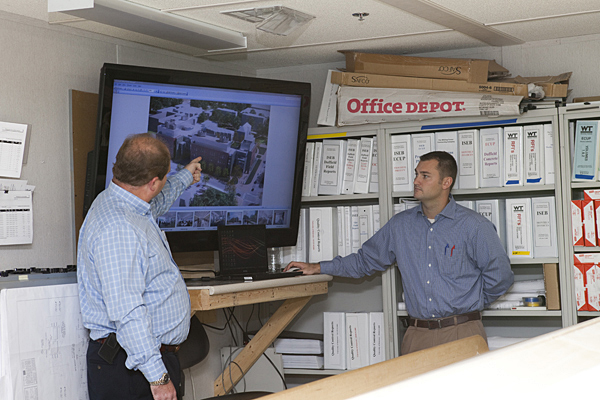

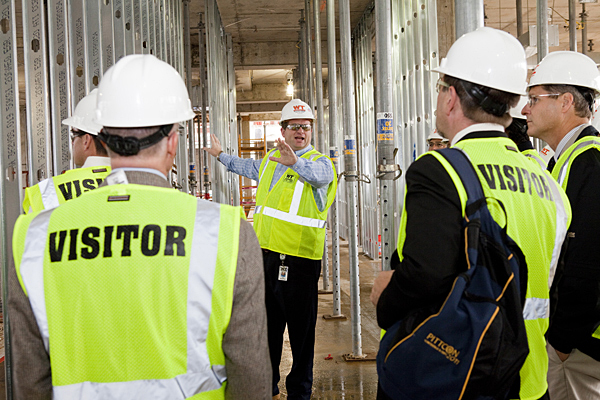
Reimagining learning
Hard hat tour offers sneak peek into revolutionary ISE Lab
2:41 p.m., Oct. 11, 2011--University of Delaware alumni surveyed progress on the Interdisciplinary Science and Engineering Laboratory (ISE Lab) during a tour of the facility grounds, Wednesday, Sept. 21.
Wearing hard hats and bright vests, the group viewed computer models detailing the building’s specifications and features, before heading outside and training their eyes upward to envision what the building’s skeleton framework will look like in its finished form.
Campus Stories
From graduates, faculty
Doctoral hooding
“As a venture capitalist in the life sciences I understand the importance of making tomorrow’s discoveries possible,” shared Bruce C. Robertson, a 1989 graduate who donated to the project. “The ISE Lab sets up innovative research possibilities by bringing students at all levels into the research environment; it’s a concept I’ve not seen before and I am thrilled to support it.”
Today’s scientific challenges are complex and require collaboration among people with many types of expertise – a reality not reflected in the design of traditional science and engineering buildings organized by department.
By contrast, the 194,000-square-foot ISE Lab is designed to integrate teaching, learning and research, with the research providing content for the curriculum and students learning through exploration of real-world problems.
The building will include classrooms and teaching laboratories, core facilities for teams of researchers, and space for the University of Delaware Energy Institute, the Center for Energy and Environmental Policy, the Delaware Environmental Institute and the Catalysis Center for Energy Innovation.
“One way a university can distinguish itself from its peers is to invest in central facilities like the ISE Lab, not only to attract faculty and researchers, but also to educate students with the best science available,” explained David Martin, chair of the Department of Materials Science and Engineering.
The first new laboratory building on UD’s campus in nearly 20 years, the ISE Lab will also provide research teams the most advanced scientific equipment possible. One example is a new microscope that will ultimately be housed in the ISE Lab microscopy suite. The instrument is a dual beam focused ion beam and scanning electron microscope (FIB-SEM).
Combining these two capabilities together is important because the ion beam can be used to etch into nanoscale materials and the electron microscope can then be used to view the sidewall of the material to observe the sample’s structure. Since the microscope also allows material to be deposited, it opens to the door for designing and creating entirely new structures in the lab at the nanoscale.
Students will learn fundamental scientific principles in broad-based courses that encompass biology, chemistry, and physics through newly structured science classes designed to leverage interdisciplinary knowledge. They will then apply those principles to solve problems in such areas as renewable energy and stewardship of the natural environment.
“We’re looking at three levels of integration as we prepare to make the most of the ISE-Lab’s new teaching environment: integration of research and teaching, integration of learning in the laboratory with the classroom, and integration of science concepts across disciplinary boundaries,” said George Watson, dean of the College of Arts and Sciences. “UD’s internationally recognized problem-based learning approach is an ideal platform for accomplishing these goals and realizing a signature science experience for students in their first year here.”
Undergraduate teaching laboratories will be located right next to state-of-the-art research facilities, seamlessly connecting undergraduate education with graduate education and research, and conveniently enabling students to become intimately involved with cutting-edge science.
“In my experience as an engineer and manager, I have observed that those with the broadest knowledge in the sciences come up with the most creative solutions,” remarked Robert L. Pritchett, a 1961 graduate and project donor who was unable to join the tour.
Following the tour, UD President Patrick Harker hosted a luncheon for the group at his home, where donors learned more about the project and the central role UD plans to play in pushing the boundaries of scientific learning and knowledge.
Article by Karen B. Roberts
Photos by Ambre Alexander




